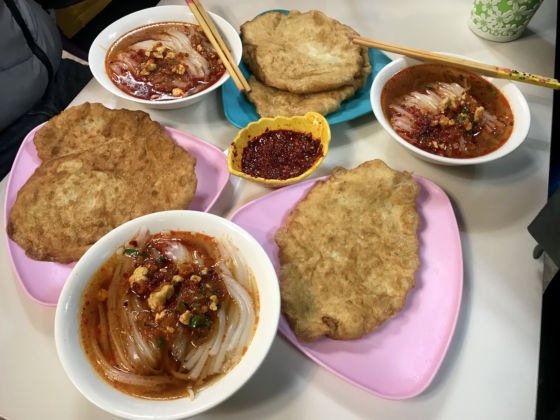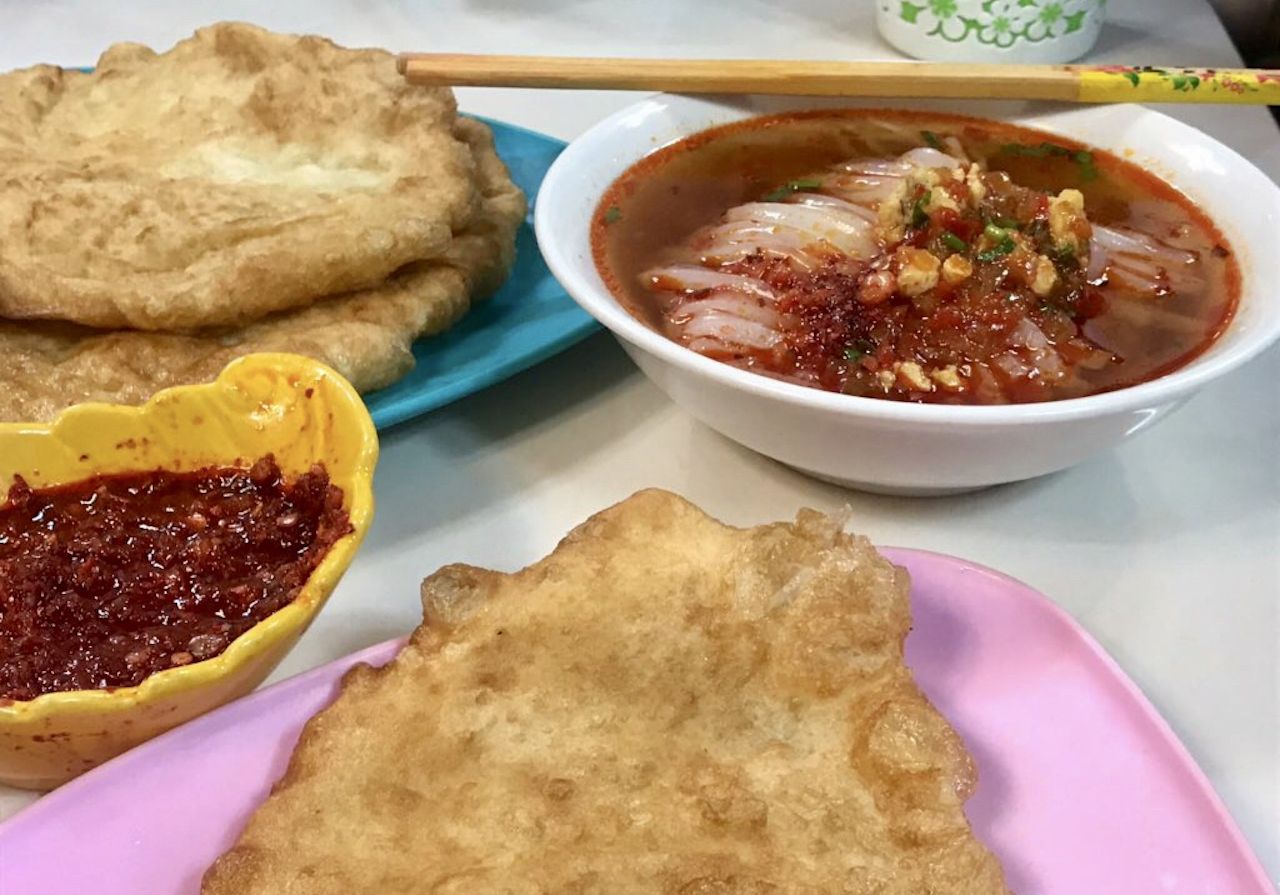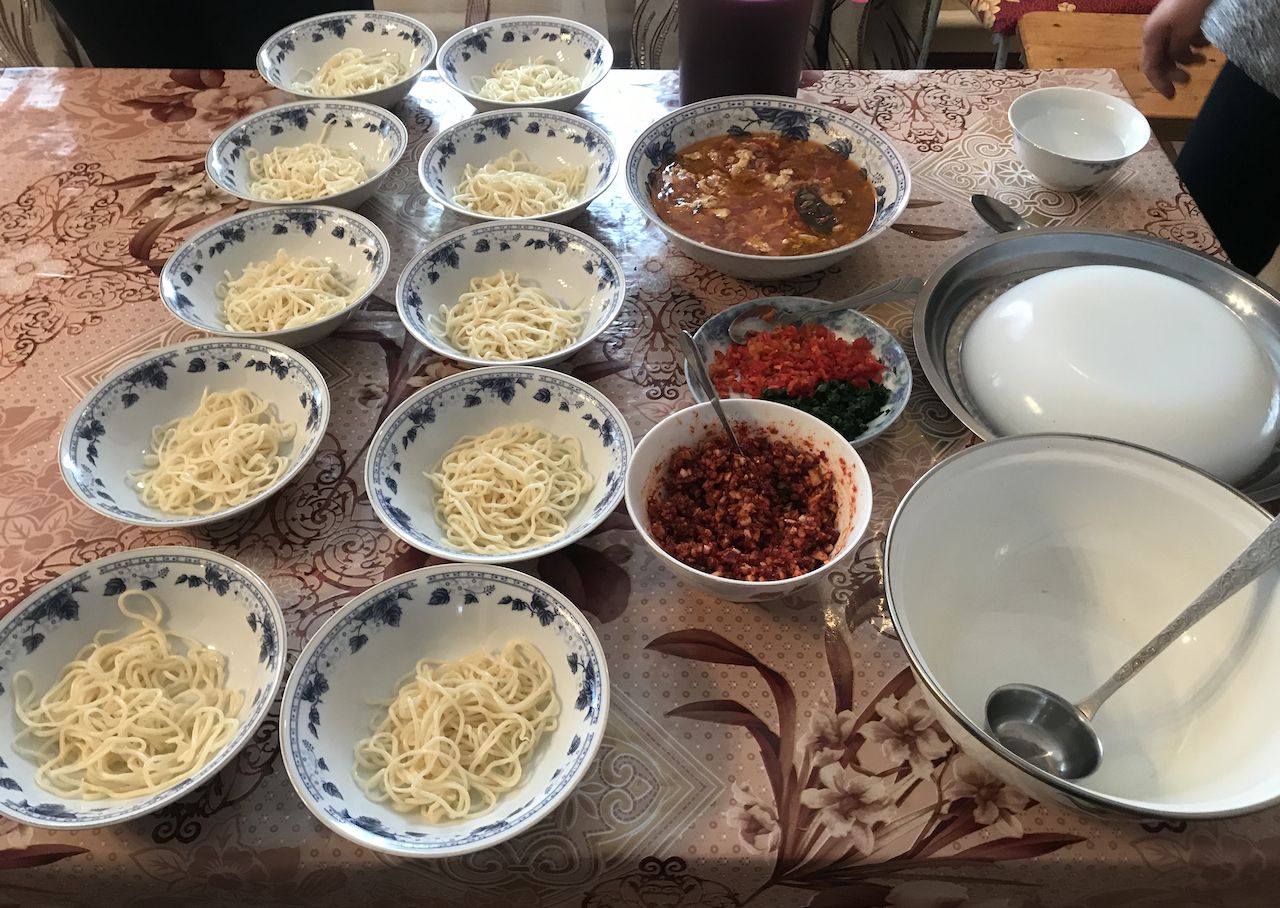There are rows of vendors and shops at the Bugu Bazaar in Karakol, Kyrgyzstan. Each is organized by theme, like jewelry and household items. As I followed my Destination Karakol food tour guide, we approached the most important row of them all: ashlan-fu alley.
Ashlan-fu is a popular dish with Chinese origins that’s synonymous with the city. The spicy soup is typically served cold, and includes pulled Laghman noodles, starch strips, egg, meat, garlic, tomatoes, crushed red peppers, and vinegar. It’s the perfect salve for the many backpackers on their way to and from some of the country’s best adventure destinations and hikers in need of a hearty meal.



